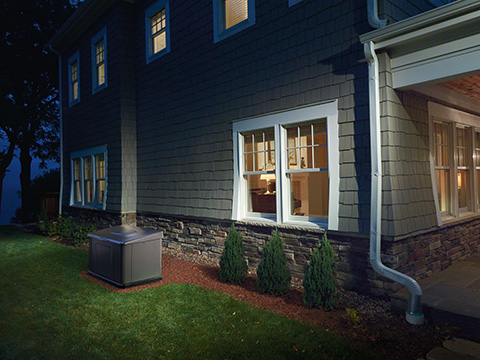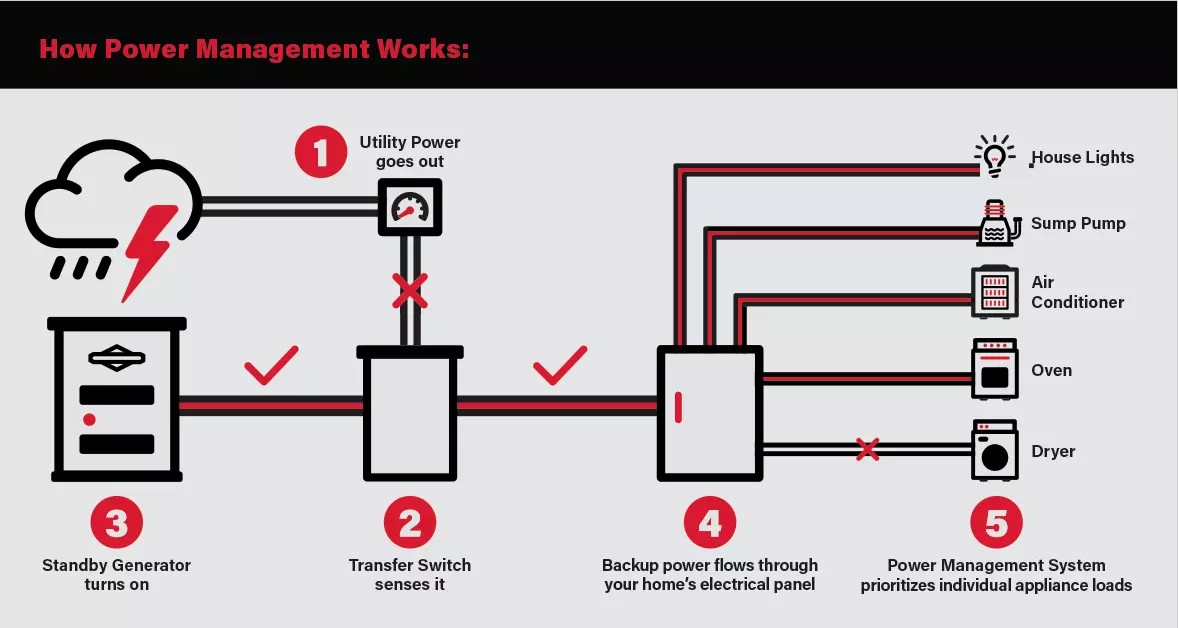Home Generator Quick Start Guide
For optimal performance of your home generator, follow these tips:
Make sure all annual maintenance is performed by a qualified technician
Monitor the controller/remote LED/InfoHub wireless monitoring system to make sure there are no alarms prior to a utility power outage
Monitor that the generator is doing its weekly exercise as set up by the installer
Common Questions for Operating Your Home Generator
What do I need to do to start my generator?
The generator will automatically sense a utility power outage and will start on its own.
How do I put generator power into my house when the utility power is out?
This is handled by the Automatic Transfer Switch (ATS). It senses the loss of utility power and the presence of generator power and makes the appropriate decision for which power to send into the home.
Can I install a standby generator inside of my home and vent the exhaust outside?
No, you should never install a Briggs & Stratton home generator inside of your home.
I lost my Briggs & Stratton manual. Where do I find another one?
You can download or email a copy of your Operator's Manual here, or you can contact your local dealer for support.
Why is my generator running for a long period of time?

To ensure it’s running properly, you may occasionally hear your generator “exercise." This process involves the generator automatically starting up for a short period of time on a preset frequency (Briggs & Stratton offers options for 16 seconds, 5 minutes, 10 minutes, 15 minutes, and 20 minutes exercise times for weekly, monthly, or when indicated). This is a self-diagnostic process that ensures the generator can start up and run properly when needed.
As spring and fall begin, you might notice that your generator has an extra long exercise. Some Briggs & Stratton home generators are set to run for 45 minutes every April 1 and September 1 for burn off. These long exercise modes allow the generator to burn off any water that may have accumulated in the engine crankcase throughout the year. This burn off helps your generator run more smoothly and lets your dealer know that your unit is working properly. These long exercise cycles act as a good maintenance routine and are good for your generator's overall health.
We have made sure that this longer run time is still giving you the most efficient generator. We have set your generator to run initially for 6 seconds at a normal speed and then drop the engine speed to a lower speed for the remainder of the exercise cycle. Running at a lower engine speed is more efficient, resulting in a quieter operation.
Can I overload my home generator?
When it comes to home backup power, the question of power management can be complicated. Simply put, is it possible to overload a home generator?
The short answer is yes. Whether your generator is an older unit or is being pushed far beyond its running wattage, overloading your generator can not only cause it to fail, but also potentially damage your home’s appliances.
Common warning signs of an overloading generator are usually overheating (or excessive heat & fan noise coming from the generator itself), dark or soot-filled exhaust, or a reduction (or inconsistency) in your home’s backup power. Our FAQ article on Rough Running Troubleshooting is a good reference point to determine whether or not overloading could be the cause of these issues.
If you own a home generator, it is important to understand its power capabilities. For example, a 20kW unit might be able to provide whole-home power, while a 10kW in many scenarios may only provide enough power for select appliances. Additionally, knowing whether or not your generator is equipped with Amplify™ or Symphony II Power Management systems is also important, as these products can prioritize the power in your home to prevent overheating. Talk to your dealer or service provider if you are unsure of these specifics related to your generator.
HOW-TO ARTICLES
Learn how to properly and safely use, troubleshoot and maintain your Briggs & Stratton equipment.
VIDEOS
Learn about the latest products, step-by-step instructions on how to locate your engine model number and more.



